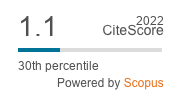Neoliberalismo, regulación ad-hoc de suelo y gentrificación: el historial de la renovación urbana del sector Santa Isabel, Santiago
DOI:
https://doi.org/10.4067/S0718-34022014000200009Keywords:
Urban renewal, gentrification, rent gap, exclusionary displacementAbstract
During the 2000s the sector of Avenida Santa Isabel, located within the municipality of Santiago in Santiago, Chile, was emblematic in Chile as it experiences one of the greatest increases in high-rise real estate development, with high rates of both private land purchases and displacement of original residents. This article documents in detail: 1) the evolution of a pro-business public-sector scheme, started in 1985, aimed at stimulating real estate market conditions and increasing private profit through increasing the constructible surface area; 2) the observed disparity of a reduced group of construction an/or real estate companies; and 3) in relation to the above, the potential "exclusionary displacement" experienced by half of the local owner-residents who have insufficient purchasing power for replacement housing based on the price received from the sale of their land






